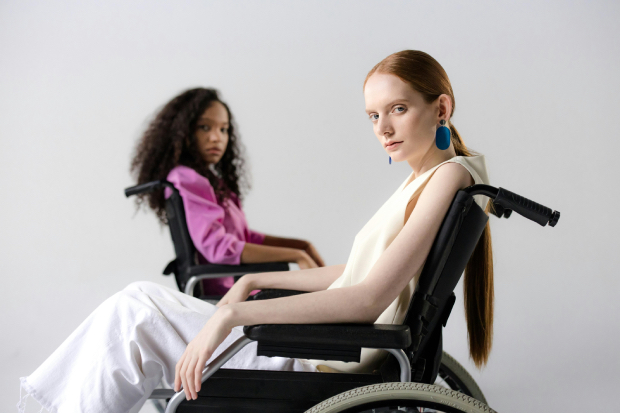The world of mobility aids has shifted dramatically, with modern wheelchairs offering features that would have seemed impossible just a decade ago. From lightweight carbon fibre frames to smart power assistance systems, the current range of wheelchairs for sale in the UK reflects genuine advances in both materials and design thinking.
These practical developments matter because they directly affect daily living. Various options—from a compact folding chair that fits neatly in the boot of a car to an advanced power chair with precise controls—focus squarely on helping users maintain their independence. Local mobility specialists across Britain now stock these updated designs, making it simpler for users to find and test chairs that match their specific needs.

How Modern Wheelchairs Are Enhancing Daily Life
Modern wheelchair design has undergone remarkable transformation, shifting from purely functional medical equipment to thoughtfully engineered mobility solutions that consider both performance and appearance. These advances represent a fundamental change in thinking about mobility aids – no longer are they simply clinical necessities, but rather essential tools that integrate seamlessly into users’ lifestyles.
Recent NHS data indicates that appropriate wheelchair provision can increase independence by up to 74% among regular users. This statistic matters because independence directly correlates with improved mental wellbeing and social participation. The real-world impact becomes clear when considering how a properly fitted wheelchair allows users to navigate homes, workplaces, and social settings with greater confidence.
The UK wheelchair market has expanded significantly, with the British Healthcare Trades Association reporting that the mobility aids sector now represents a £2.8 billion industry. This growth reflects increasing demand for chairs that address specific lifestyle requirements rather than one-size-fits-all solutions. Manufacturers now develop models designed for particular activities, environments, and body types – acknowledging that users have diverse needs and preferences.
This shift toward lifestyle-oriented design marks a departure from previous approaches. Contemporary chairs incorporate ergonomic principles that allow longer periods of comfortable use, reducing the physical strain that older models often caused. The evolution extends beyond functional improvements to include aesthetic considerations, acknowledging that appearance matters to many users.
Essential Features That Define Quality Wheelchairs
Weight stands as perhaps the most transformative factor in modern wheelchair design, directly impacting user independence. Lightweight models, typically ranging from 8-14kg, offer significant advantages over standard chairs weighing 18kg or more. This difference becomes apparent during everyday tasks like self-propelling up slight inclines or transferring the chair into vehicles. The reduced effort required with lighter models helps preserve energy for other daily activities.
Frame materials contribute substantially to both weight and durability considerations. Aluminium frames offer good strength-to-weight ratios at moderate price points, making them popular choices for everyday use. Carbon fibre provides exceptional lightness while maintaining strength, though at premium prices. Titanium frames, while less common, deliver outstanding durability with natural vibration-dampening properties that increase comfort during longer journeys.
Folding mechanisms have evolved significantly, addressing practical transportation concerns. Modern compact-folding designs reduce storage dimensions by up to 60% compared to traditional cross-brace folders. This improvement allows chairs to fit into smaller vehicles without requiring disassembly. Quick-release wheels further enhance portability, enabling users to manage storage independently.
The configuration of wheels significantly affects mobility across different environments. Larger rear wheels (typically 24-26 inches) provide better performance outdoors and on uneven surfaces, while smaller wheels offer greater indoor manoeuvrability. Many current models feature adjustable axle positions, allowing users to modify the chair’s centre of gravity based on their skill level and environmental needs.
Mobility Solutions stocks wheelchair models that incorporate these quality considerations through carefully engineered designs. Their range includes chairs with adjustable features that accommodate changing user needs without requiring replacement of the entire unit – an approach that reflects the growing emphasis on adaptability in mobility equipment.
Matching Wheelchair Types to Lifestyle Needs
Selecting between self-propelled and transit chairs requires careful consideration of daily activities and living arrangements. Self-propelled models, with their larger rear wheels, provide autonomy for active users who have sufficient upper body strength. Transit chairs, pushed by assistants, may better serve those with limited arm mobility or who tire easily. The distinction becomes particularly important when considering home layouts – self-propelled chairs generally require wider doorways and turning spaces.
Powered wheelchairs offer solutions for those needing assistance with longer journeys or who have limited strength for self-propulsion. Modern battery technology has extended typical ranges to 15-20 miles per charge, supporting full days of activity without power concerns. Control systems have become increasingly sophisticated, with options ranging from traditional joysticks to breath-controlled interfaces for users with limited hand dexterity.
Specialised designs address particular activities and environments. Sports chairs feature angled wheels for greater stability during rapid direction changes, while travel chairs emphasise lightweight construction and compact folding. All-terrain models with wider wheels and reinforced frames allow access to outdoor spaces previously challenging for wheelchair users. Each variant represents a targeted response to specific lifestyle needs.
Customisation options extend beyond purely functional aspects to include aesthetic choices that reflect personal style. Frame colours, spoke designs, and upholstery materials can be selected to match individual preferences. This personalisation acknowledges the chair as an extension of identity rather than merely an assistive device.
Long-term needs require forward-thinking chair selection. Adjustable models that accommodate changes in physical condition often prove more economical over time. Features like modifiable seat widths and backrest heights ensure the chair remains suitable as needs evolve, potentially reducing the frequency of replacement.
Style-Conscious Mobility: Beyond Clinical Appearances
Wheelchair aesthetics have evolved dramatically, moving away from institutional designs toward models that resemble contemporary furniture or sporting equipment. This shift reflects growing recognition that appearance affects how users feel about their mobility aids and how others perceive them. Modern frames feature sleek lines, minimalist designs, and fashionable colour palettes that complement rather than highlight the assistive nature of the device.
The UK market now offers extensive colour options beyond traditional black and grey frames. Metallic finishes, two-tone colour schemes, and even patterned frames allow for personal expression. Some manufacturers provide custom colour matching services, enabling chairs to coordinate with other possessions or reflect the user’s personality through colour psychology.
Upholstery and accessories have similarly expanded in variety and quality. Breathable fabrics with moisture-wicking properties replace institutional vinyl, while accent colours on wheel rims and frame components add subtle personalisation. Aftermarket accessories like spoke guards feature artistic designs, transforming functional components into expressive elements.
Research from the University of Exeter suggests that aesthetically pleasing mobility aids positively impact user confidence in social settings. Participants reported 43% higher comfort levels in public when using devices they considered stylish versus purely functional models. This finding underscores how visual appeal contributes to psychological well-being and social engagement – factors equally important as physical functionality.
Navigating the Wheelchair Selection Process
Proper assessment forms the foundation of successful wheelchair selection. Key measurements include seat width (typically 2-3cm wider than the user’s hips), seat depth (allowing 2-3cm clearance behind the knees), and backrest height (based on trunk control needs). Environmental factors such as doorway widths (standard UK residential doorways measure 76cm) and home layout require equal attention. These measurements help narrow options to chairs that will function efficiently within existing spaces.
Research by Rica indicates that 67% of wheelchair users who participated in professional assessments reported higher satisfaction with their mobility solutions than those who selected chairs without expert guidance. This underscores the value of consulting occupational therapists or mobility specialists who understand the interaction between physical needs, environmental factors, and available technologies.
Testing remains essential before finalizing wheelchair selection. Most reputable mobility specialists offer trial periods that allow users to experience chairs in relevant environments.
You might also enjoy more articles in Our Stories/




